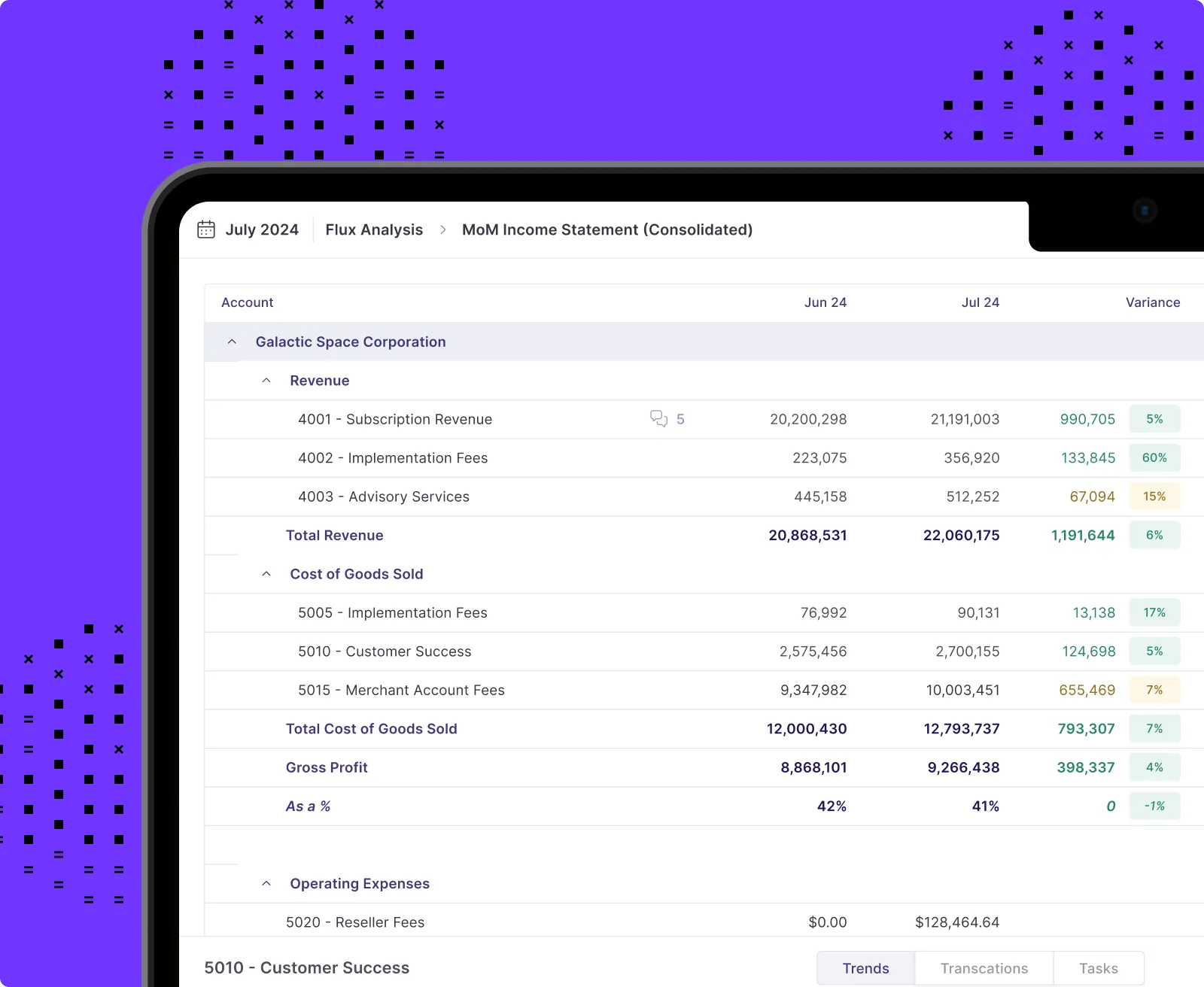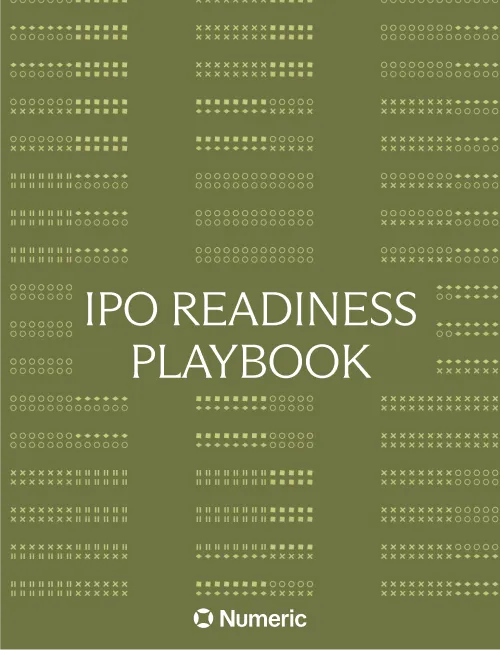Fixed Assets: Definition, types, and how to manage them
.webp)
Fixed assets are physical or tangible items that are purchased by the business, support its operations, and have a monetary value. It’s crucial for companies, especially those who have to do any CIP accounting, to accurately track and manage their fixed assets in order to maintain long-term profitability and success. That makes optimizing the processes for handling your fixed assets essential.
Lucy’s Lemonade Stand
Lucy's Lemonade Stand continues to be a sensation in her neighborhood, and her ambition knows no bounds. Always on the lookout for ways to innovate and improve her lemonade-making process, Lucy stumbles upon an advertisement for the latest juicing technology: "JuiceON."
Promising to revolutionize the way she makes lemonade, JuiceON boasts state-of-the-art features and a sleek design that catches Lucy's eye. The advertisement claims that JuiceON can squeeze every last drop of juice from the lemons, ensuring no wastage and an even tastier lemonade. Intrigued and excited, Lucy decides to invest $8,000 in this promising gadget.
Excitedly, Lucy integrates JuiceON into her lemonade-making process. Initially, it seems to be a game-changer, speeding up production and adding an extra zest to her lemonade.
In accounting terms, Lucy's lemonade stand would handle this investment as follows:
When purchasing JuiceON:
- Debit (increase) Fixed Assets: $8,000
- Credit (decrease) Cash: $8,000
Over the next two months (Depreciation):
With an estimated useful life of four years, JuiceON would be depreciated at a rate of $166.67 per month ($8,000 / 48 months).
- Debit (increase) Depreciation Expense: $166.67
- Credit (decrease) Accumulated Depreciation: $166.67
After only two months, Lucy begins to notice that JuiceON is not performing as it should. It starts to malfunction, and the lemonade's quality declines. Despite repeated attempts to fix it and no ability to get in touch with customer support because the manufacturer has gone out of business, Lucy can't get JuiceON back to its optimal condition. Realizing that it's no longer useful and that she can't get a refund, she decides to dispose of it.
Disposal of JuiceON:
- Debit (increase) Loss on Disposal of Assets: $7,666.66 (original cost minus accumulated depreciation)
- Credit (decrease) Fixed Assets: $8,000
- Debit (decrease) Accumulated Depreciation: $333.34 (2 months of depreciation)
In conclusion
Lucy's short-lived experience with JuiceON provides a tangible lesson in asset management, specifically the importance of monitoring performance and recognizing when to cut losses. Her willingness to innovate was commendable, but not all investments pan out as hoped. Even a seemingly perfect asset can turn out to be a lemon.
What are fixed assets?
Fixed assets, a type of capital asset, are long-lasting tangible “property, plant, or equipment” (PP&E) that are used over time by a business to generate income. Unlike current assets (or short-term assets), which are company-owned items that will be converted to cash within the year, fixed assets are items that cannot be replaced with cash within the year, making them long-term investments that are considered noncurrent assets.
Why are fixed assets vital to your business?
Fixed assets, which are tangible assets, serve several purposes. They’re used to generate revenue, whether it's a piece of equipment that produces goods to sell, office equipment, or a piece of real estate that acts as a business location that provides services to customers. A fixed asset can also provide a headquarters from which to operate a business.
In addition to business operations, fixed assets can benefit a company through accounting treatments such as capitalization and depreciation. Businesses can leverage a fixed asset’s value for access to loans, which may help improve cash flow. At the same time, depreciation lets companies recover the cost of an asset and allows them to reduce the amount of taxes paid through deductions. They can be beneficial for small businesses whose cash flow may not be as secure, helping them invest in the company’s future and add long-term value.

Understanding fixed assets
While capital-intensive industries typically have the most fixed assets (automotive, manufacturing, airline, etc.), they are held by businesses of all sizes and industries. Fixed assets (also called noncurrent assets, long-term assets, or long-lived assets) have three defining characteristics:
- They are acquired and held to use in operations
- They are long-term; longer than one year
- Are tangible; have physical substance (they do not include intangible assets)
Types of fixed assets
Fixed assets include things such as:
Property
- Land
- Buildings
- Factories
Equipment
- Vehicles
- Machinery
- Tools
- Furniture and fixtures
- Computer hardware and software
Fixed asset accounting
Fixed assets influence a company’s balance sheet, income statement, and statement of cash flows. Their nature makes them a part of multiple accounting treatments. The general flow of fixed assets is as follows:
Fixed assets are part of the balance sheet, while the corresponding depreciation expenses are part of the income statement. The GAAP recognizes several depreciation methods. Fixed assets are further represented on the statement of cash flows and a business’s tax returns. On the statement of cash flows, the depreciation included in the net income on the income statement is reversed and it is separated from continuing operations by containing it within “cash flows from investing activity.” Fixed assets benefit tax returns by letting businesses reduce taxable income for depreciation.
When first recording a fixed asset purchase, debit the asset account for the purchase price and credit the cash account for the same amount.
The common fixed asset lifecycle is: Acquisition, depreciation, periodic revaluation, and disposal.
Depreciation methods for fixed assets
Depreciation represents the value reduction of a capitalized asset over time. Three factors affect a fixed asset’s depreciation calculations. These are useful life, salvage value, and the depreciation method. Under GAAP, there are five methods for depreciation.
Straight line
The straight line method calculates depreciation at the same amount year after year for the life of the asset. Straight line depreciation is considered the simplest method.
Declining balance
The declining balance method is good for companies with assets that lose value quickly in the early years, such as vehicles or technology like computers. You’ll record larger depreciation expenses during the early years of an asset’s useful life and smaller depreciation expenses later. The declining balance method is considered an accelerated depreciation system.
Double declining balance
The double declining balance method is an accelerated depreciation system as well. It depreciates assets twice as fast. It’s ideal for assets that become obsolete quickly.
Sum of the year’s digits
Sum of the years’ digits, or SYD depreciation, works much like the declining balance method, but not as aggressively. This method requires that you know the total useful life of the asset.
Units of production
The units of production method of depreciation removes the time factor. Instead, you’ll use the number of unis an asset produces and the estimate of how much it will produce throughout its useful life.
GAAP/IFRS requirements for fixed assets
Per the GAAP/IFRS, fixed assets must be recorded at their historical cost, including the cost of what it takes to obtain and condition it, and depreciated accordingly on a periodic basis.
Nonprofit capitalization policy
Nonprofits often come with their own fine-tuned accounting standards. Because of compliance, rules, and regulations that surround a nonprofit’s finances, they benefit from implementing policies that prevent errors or mismanagement. One such policy is the capitalization policy, which should include the process and criteria for recording fixed assets, and guidelines for keeping track of fixed assets throughout their useful life. It also benefits to have a capitalization threshold; the dollar amount in which an item is recorded as a fixed asset.
Choosing the best depreciation method
The method you choose will depend on the type of asset and how they are used. It helps to use real-world examples and strong processes to discover what’s best for your fixed assets and financial reporting.
What is the fixed asset turnover ratio?
The fixed asset turnover ratio is a commonly used metric in the manufacturing industry. These metrics are relevant for companies making large purchases of property, plant, and equipment (PP&E) to improve their output. Investors closely monitor this ratio in the following years to see if the company's new fixed assets lead to increased sales.
Analysts use the fixed asset turnover ratio (FAT) to measure a company's operating performance. This efficiency ratio compares net sales (from the income statement) to fixed assets (from the balance sheet). It measures the company's ability to generate sales from its fixed-asset investments, such as PP&E. The fixed asset balance is calculated as the net of accumulated depreciation. A higher fixed asset turnover ratio indicates that a company has effectively used its investments in fixed assets to generate sales.
When do fixed assets get complicated?
- Increased volume of assets: The volume of assets a company handles can leave them more prone to errors, especially without an optimal process in place. It can also demand resources that could otherwise be utilized elsewhere.
- Different depreciation methods: Fixed assets may benefit from varying depreciation methods. Without a strong system in place, businesses can lose out on tax deductions or incorrectly calculate.
- Multinational considerations: Consider a US-based hotel chain with international properties. They may encounter varying regulations for fixed assets, making it crucial to understand how fixed assets operate in global business.
- Integration with existing systems: Without the right systems and integrations, a company may not receive a full and accurate picture of its fixed assets. This can result in time-consuming manual labor and the need to go back and fix errors.
The limits of current systems
Spreadsheets are flexible, but they're manually intensive and lack audit trails, making them prone to errors and inconsistencies. In addition, many ERP (enterprise resource planning) systems that automate the processes surrounding fixed assets can fall short in adaptability and reporting. While they may handle standard situations, they struggle with additional complexities.
The good news is that accounting tools are advancing quickly, giving businesses the flexibility and optimized processes they need to respond to their evolving needs.
Tips to improve fixed asset management (and how Numeric can help)
Modernizing your accounting systems can improve your fixed asset process. Assess where you’re at and identify what would streamline your operations. From here, you can standardize workpapers and begin to automate workflows.
- Completeness: The first priority is ensuring that all necessary transactions are correctly coded in the fixed asset subledger. By utilizing Numeric, teams can establish real-time monitoring and alerts. This automation will automatically trigger notifications about transactions requiring review, streamlining the oversight process.
- Accuracy: Following the completeness check, teams must scrutinize their fixed asset subledger to guarantee data accuracy and proper recording of all items. Numeric serves as a valuable tool in this phase, allowing teams to review all of their month-end accounting work in one consolidated location, thus enhancing efficiency.
- Adjustment: Next, the necessary journal entry or entries are posted to the general ledger. Numeric offers the ability to track these adjustments automatically, providing a seamless connection between the subledger and the general ledger.
- Reconciliation: Once adjustments have been recorded, it's vital to ensure that the workpaper aligns with the general ledger. Numeric facilitates this process by automatically pulling data from both workpapers (such as this best-practice template) and the general ledger. This integration ensures that the ending balance is appropriately substantiated, reinforcing accuracy and compliance.
By leveraging a tool like Numeric, businesses can transform the often complex and time-consuming tasks associated with fixed assets into a streamlined and automated process. The result is a more accurate, efficient, and auditable management of this critical financial element.
Numeric’s template workpaper for fixed assets
Download our best-practice fixed asset expense workpaper. A well-structured Excel template can be a simple yet effective solution for managing fixed assets. It's designed to reduce errors and save time by providing a standardized structure with built-in formulas.
To get started, simply download the template here, and follow the included instructions. This easy-to-implement tool puts better control and clarity at your fingertips.
In conclusion
Fixed assets are an integral part of a company’s balance sheet and financial statements, and how you handle them can make a big difference in a business’s overall financial health. Because of the benefits fixed assets offer, an optimized process allows for better growth and investment opportunities, and increased tax deductions.
In today's business landscape, staying on top of financial management practices is crucial. One such critical component is fixed assets, which can be complex and time-consuming to manage without the right tools and techniques. However, with the help of modern tools like Numeric, teams can significantly enhance their efficiency and accuracy.
By leveraging technology and thoroughly understanding the intricacies of successfully managing fixed assets, a business can boost its overall financial health.

















.png)
.png)
.png)